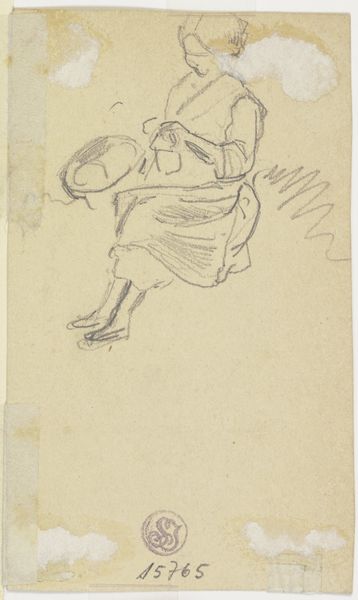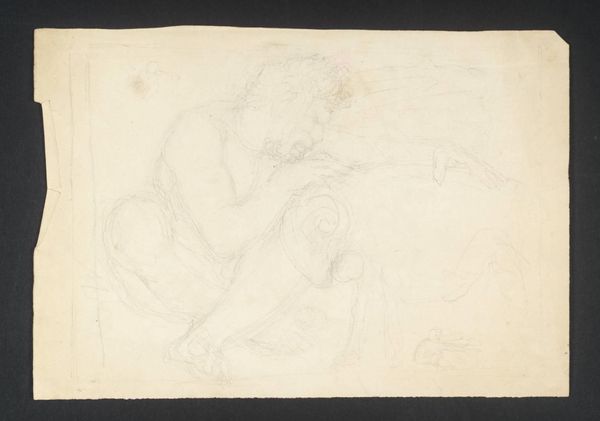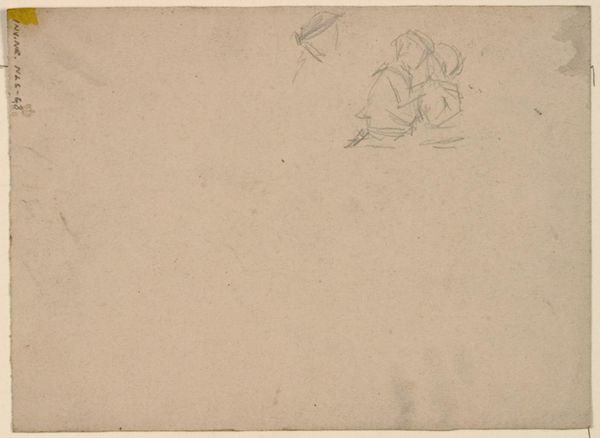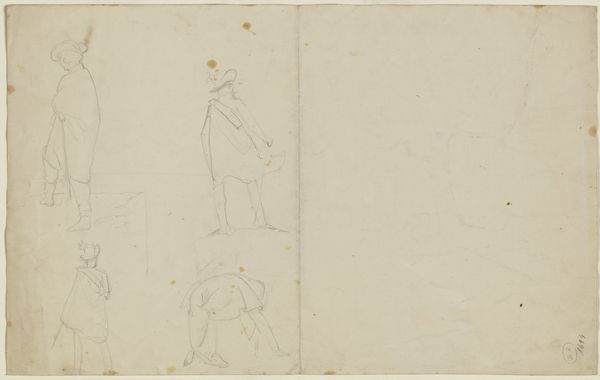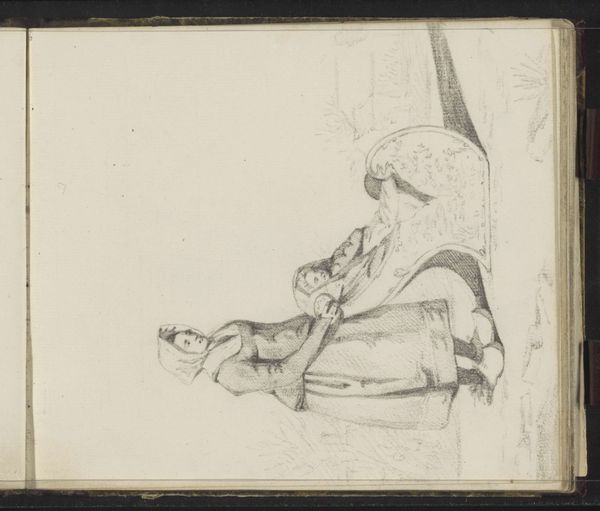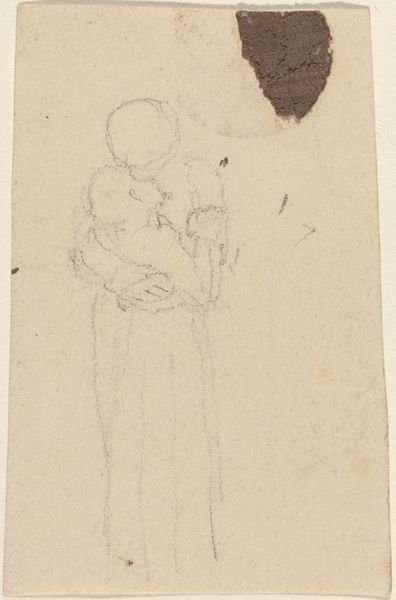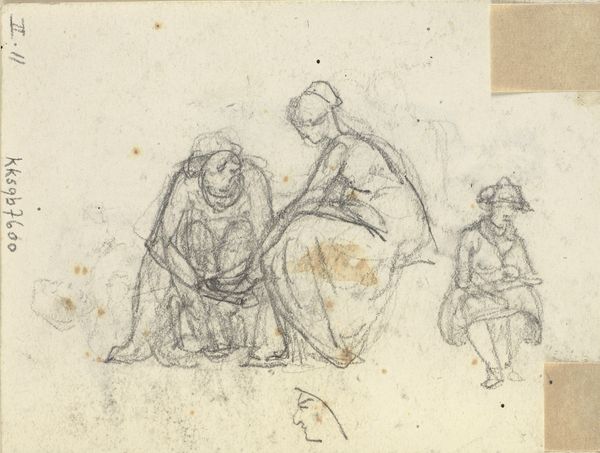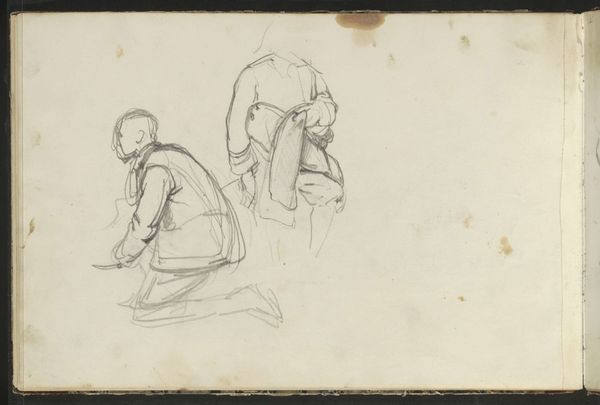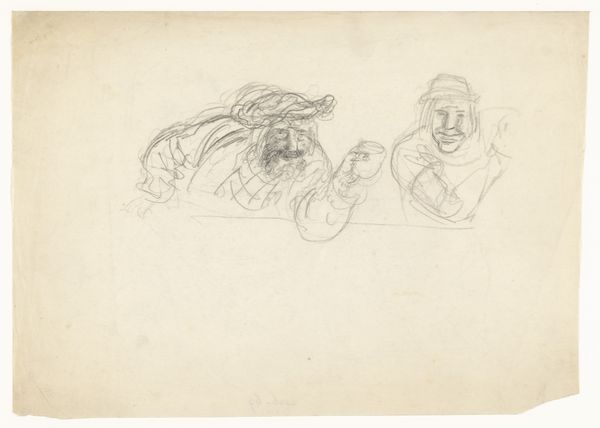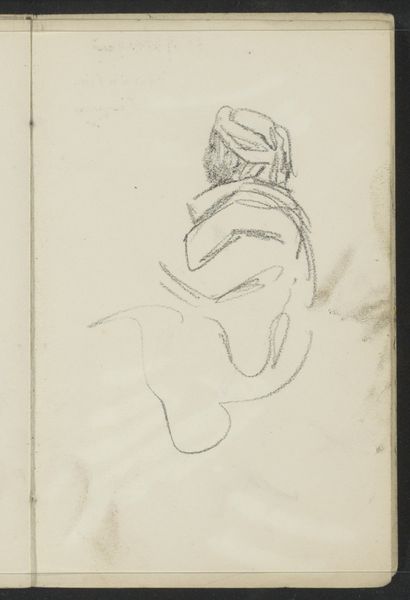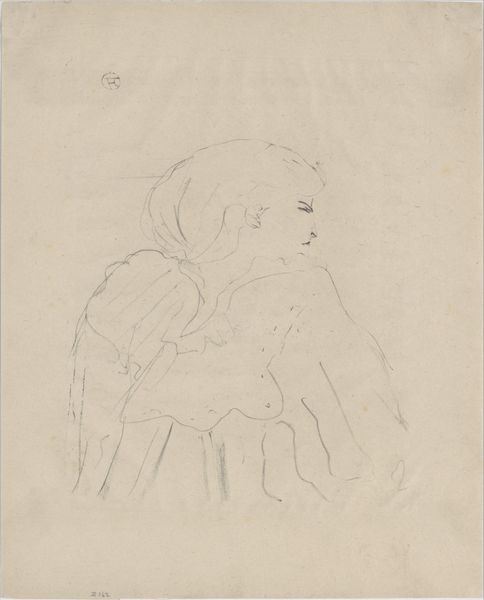
drawing, pencil
#
portrait
#
drawing
#
amateur sketch
#
toned paper
#
light pencil work
#
16_19th-century
#
pencil sketch
#
figuration
#
personal sketchbook
#
german
#
idea generation sketch
#
sketchwork
#
pencil
#
sketchbook drawing
#
sketchbook art
#
initial sketch
Copyright: Public Domain
Curator: Wilhelm Amandus Beer created this pencil sketch, titled "Sitzendes Kind mit Spielzeug und Katze"—or, “Seated Child with Toy and Cat.” Editor: My first impression is its fragility. The light pencil work on this toned paper creates a sense of quiet intimacy, like glimpsing a private moment. Curator: Absolutely. There’s a symbolic language here, though subtly rendered. The child, holding what appears to be a small toy or perhaps food, alongside a cat… childhood innocence and the comfort of companionship are prominent. These motifs recur throughout art history, often representing domestic harmony and purity. Editor: The composition itself is quite interesting. The child and cat are contained within a defined space, while much of the paper remains blank, emphasizing the contained world of the child, yet with the suggestion of a broader reality just outside of it. Notice how Beer used delicate lines to define form and texture—almost an incomplete form— leaving so much to our imagination. Curator: And cats often act as guardians or symbolic representations of independence and intuition. Is Beer subtly imbuing the child with these qualities through her feline companion? The pose, with the child seated and self-absorbed, seems to detach from her surroundings, highlighting the process of early cognitive development through engagement with the symbolic realm of toys. Editor: It’s also worth observing that the sketch feels less like a finished piece and more like an exercise. You get this sense of the artist exploring shape, light and maybe even memory, but as something fleeting, transient… almost ephemeral. Curator: That informs my reading as well, it’s less a statement about idealized childhood than an impression of its lived reality – an attempt to capture the very essence of the child's internal life. Editor: It leaves you wondering about Beer's own connection to these figures – whether they were family, commissions, or just an exercise of form. That ambiguity adds to its compelling charm, no? Curator: Indeed. Ultimately, this drawing is a testament to the power of simple lines to evoke complex emotions and layered meaning. It's a fleeting vision rooted in our universal experience and recollection of our own childhoods. Editor: Agreed; there's beauty in the suggestion, in how much it prompts *us* to construct through such subtle means.
Comments
No comments
Be the first to comment and join the conversation on the ultimate creative platform.
